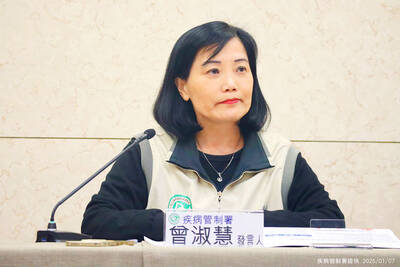The number of foreign students attending Taiwanese universities last year dropped 9.46 percent from 2019, mainly due to a marked decline in the number of Chinese students, the National Audit Office said in a report.
Last year, there were 116,038 foreign students — 67,299 degree students and 48,739 non-degree students — a decrease of 12,119, or 9.46 percent, from 128,157 in 2019, the report said.
China in 2020 stopped allowing Chinese students to study in Taiwan, saying that COVID-19 pandemic controls and “the cross-strait situation” were the reasons for the change. Chinese who had already come to Taiwan were allowed finish their studies.

Photo: Chen Yu-fu, Taipei Times
Regarding the number of Chinese studying in Taiwan, there were 16,696 visiting students and 8,353 degree students in 2019, four visiting students and 6,032 degree students in 2020, zero visiting students and 4,293 degree students in 2021, 22 visiting students and 3,121 degree students in 2022, and 2,523 visiting students and 2,128 degree students last year, the report said, citing data from the Mainland Affairs Council.
From January to June this year, there were 953 visiting Chinese students, and the number of degree students from China is projected to decrease to zero by the end of this month, it said.
To address Taiwan’s low birthrate and key industries’ demand for talent, the Ministry of Education in 2022 launched a program to increase the number of Chinese students (including from Hong Kong and Macau) and other foreign students in line with the National Development Council’s immigration policy, the report said.
The goal of the program is to increase the number of foreigners studying at departments and institutes related to Taiwan’s key industries and retain talent, it said.
However, 79 percent of foreign students, or 91,673, came from 10 nations or regions last year — India, Indonesia, Japan, Hong Kong, Malaysia, Thailand, the Philippines, South Korea, the US and Vietnam — and no mechanism has yet been created to track the employment of foreign students after graduation, it said.
The office has asked the ministry to establish an employment tracking mechanism to better evaluate the program’s outcomes, and it is urging subsidized schools to improve their employment counseling services to help top foreign students join Taiwan’s workforce after graduation, the report said.
The ministry should find ways to attract students from other countries and regions, particularly because the number of foreign students has been decreasing for about five academic years, it said.
Overall, the outcomes of the program needs to improve, as enrollment is limited and many foreign students have left school because they failed the Test of Chinese as a Foreign Language, the report said.

The Executive Yuan yesterday approved a southwestern extension of the Sanying MRT Line from New Taipei to Bade District (八德) in Taoyuan, with a goal of starting construction by late 2026. The 4.03-kilometer extension, featuring three new stations, will run from the current terminus at Yingtao Fude Station (LB12) in New Taipei City to Dannan Station (LB14), where it will connect with Taoyuan’s Green Line, New Taipei City Metro Corp said in a statement. This extension will follow the completion of core Sanying Line, a 14.29-kilometer medium-capacity system linking Tucheng (土城), Sansia (三峽)

CARGO LOSS: About 50 containers at the stern of the ‘Ever Lunar’ cargo ship went overboard, prompting the temporary closure of the port and disrupting operations Evergreen Marine Corp, Taiwan’s largest container shipper, yesterday said that all crew members aboard the Ever Lunar (長月) were safe after dozens of containers fell overboard off the coast of Peru the previous day. The incident occurred at 9:40am on Friday as the Ever Lunar was anchored and waiting to enter the Port of Callao when it suddenly experienced severe rolling, Evergreen said in a statement. The rolling, which caused the containers to fall, might have been caused by factors including a tsunami triggered by an earthquake in Russia, poor winter sea conditions in South America or a sudden influx of waves,

The Ministry of Culture yesterday officially launched the “We TAIWAN” cultural program on Osaka’s Nakanoshima sandbank, with the program’s mascot receiving overwhelming popularity. The cultural program, which runs from Aug. 2 to 20, was designed to partner with and capitalize on the 2025 World Expo that is being held in Osaka, Japan, from April 13 to Oct. 13, the ministry said. On the first day of the cultural program, its mascot, a green creature named “a-We,” proved to be extremely popular, as its merch was immediately in high demand. Long lines formed yesterday for the opening

BE CAREFUL: The virus rarely causes severe illness or death, but newborns, older people and those with medical conditions are at risk of more severe illness As more than 7,000 cases of chikungunya fever have been reported in China’s Guangdong Province this year, including 2,892 new cases last week, the Centers for Disease Control (CDC) yesterday said it is monitoring the situation and considering raising the travel notice level, which might be announced today. The CDC issued a level 1 travel notice, or “watch,” for Guangdong Province on July 22, citing an outbreak in Foshan, a manufacturing hub in the south of the province, that was reported early last month. Between July 27 and Saturday, the province reported 2,892 new cases of chikungunya, reaching a total of 7,716